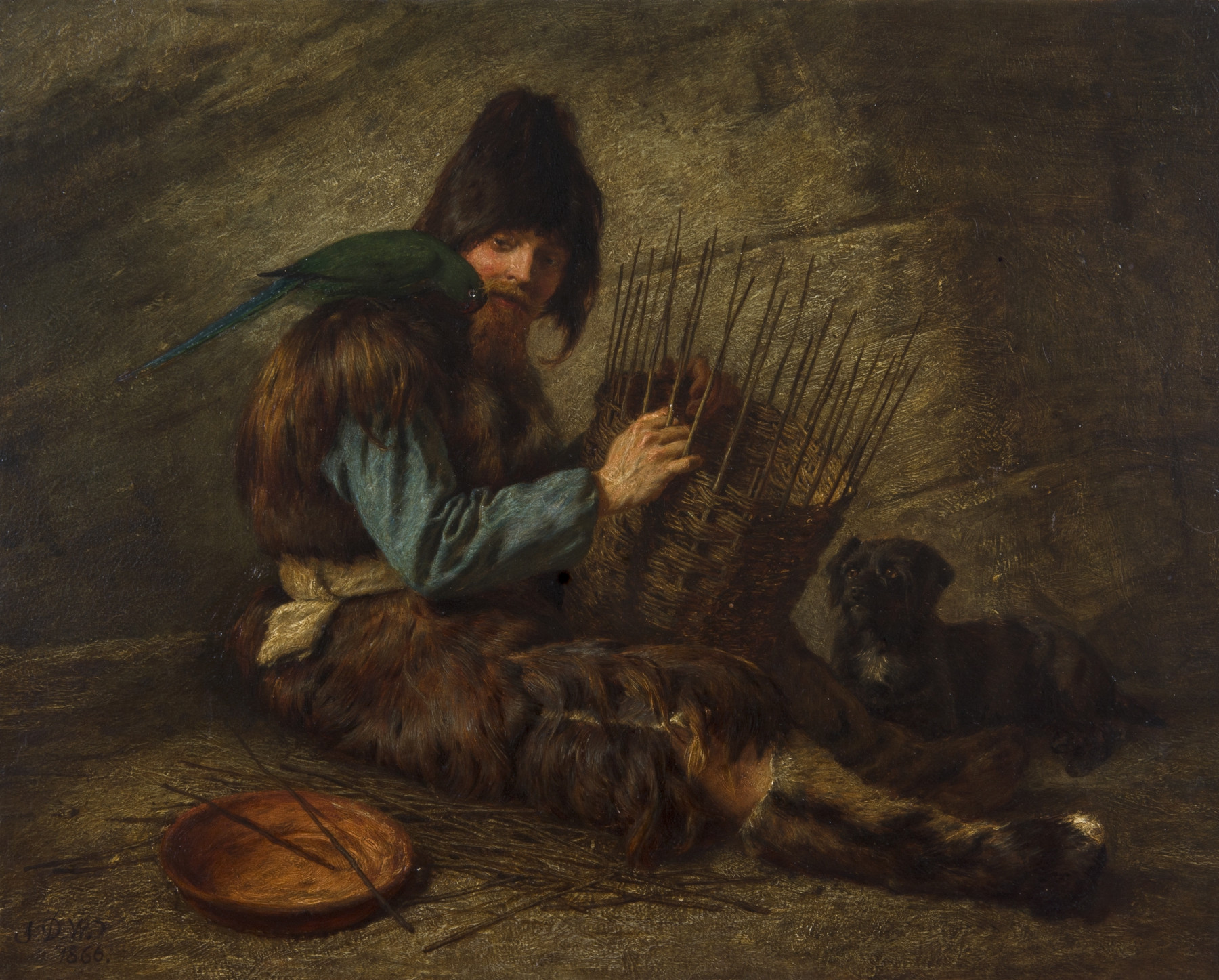
(click image to enlarge)
John Dawson Watson had a strong attachment to Daniel Defoe’s novel, The Life and Adventures of Robinson Crusoe (1719), and may even have identified with the titular character. Indeed, photographs of the artist suggest that the present painting is, to a degree, a self-portrait. He seems to have been particularly fond of the episodes that describe Crusoe’s ideal island life, exhibiting two works inspired by them at the Royal Academy of Arts: Robinson Crusoe: ‘It would have made a stoic smile to see me and my little family’ (1855, No 185) and Robinson Crusoe teaching his parrot to talk (1863, No 92). Both these oils and other watercolours informed his preparations for an illustrated edition of the novel, which was published by Routledge, Warne, and Routledge in 1864. His illustrations have been described as ‘characterized by the fineness of line and the clarity of execution’ (David Blewett, The Illustrations of Robinson Crusoe, 1719-1920, Gerrards Cross: Colin Smythe, 1995, page 109). Both the present oil and a similar, exactly contemporary, watercolour – once in the collection of David Daniels and Steven Beck Baloga – demonstrate that Watson’s interest in the subject was sustained rather than exhausted by this illustrative project. A description of that watercolour applies equally well to this oil:
Daniel Defoe’s hero Robinson Crusoe [is] making baskets, accompanied by his faithful dog and the parrot that he tamed and taught to speak. Crusoe had tried to make baskets from twigs and tree branches, but finding them too brittle, had looked for alternative materials. Remembering the way basket makers he had observed in his childhood had used wicker, he experimented with the shoots that grew from the cut stakes with which he had fortified his hut. These he dried and then carried to his cave where ‘during the next season, I employed myself in making, as well as I could, a great many baskets, both to carry earth, or to carry or lay up any thing as I had occasion; and tho’ I did not finish them very handsomely, yet I made them sufficiently serviceable for my purpose’.(Christopher Newall, English Realist Watercolors, 1830-1915: a collection assembled by David Daniels and Stevan Beck Baloga, New York: Shepherd Gallery, 1997)